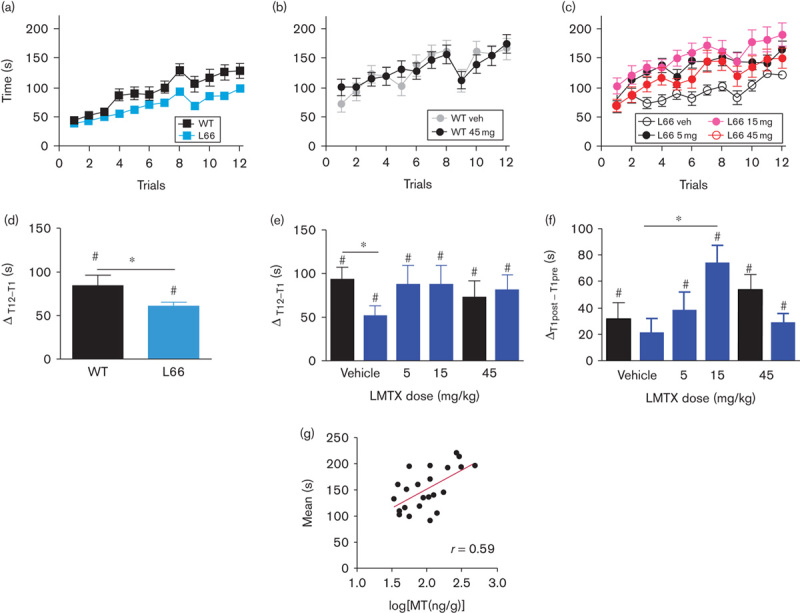Fig. 7.

Motor performance and motor learning on the RotaRod in LMTX-treated mice. (a) Pretreatment performance is plotted as the time sustained on the accelerating rod for both WT and heterozygous L66 mice. L66 mice showed no performance deficit initially, but WT mice more readily learned the task over 3 days (four trials per day). (b) Compared with vehicle, LMTX did not affect post-treatment performance in WT mice. (c) In contrast, the performance of L66 mice was improved by all doses of LMTX. Overall learning scores in L66 mice were lower (d) before treatment but not (e) after treatment relative to WT. (f) All groups other than L66 mice treated with vehicle showed better performance, consistent with motor memory, from pretreatment trial 1 to post-treatment trial 1. L66 mice receiving 15 mg/kg LMTX showed significantly better motor memory than vehicle-treated L66 mice. Values are expressed as mean±SE. *P<0.05, #P<0.05 relative to 0. (g) The brain MT concentration and motor performance for L66 mice treated with LMTX (5 and 15 mg/kg; in this case LMTB) showed a positive correlation (r=0.59, P<0.01). The 15 mg/kg doses are equivalent to 11 mg MT/kg for LMTB. L66, Line 66; LMTB, leucomethylthioninium bromide; LMTX, leucomethylthioninium salt; MT, methylthioninium; MTC, methylthioninium chloride; WT, wild type.
